 |
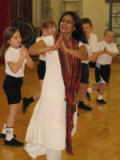 |
| Year 4 |
|
||
Indian Dance Day |
||||
10 January 2007 |
||||
In their Geography lessons, the children of Year 4 study the topic of India. On this special day, they were given a fantastic opportunity to learn some traditional Indian dancing. |
||||
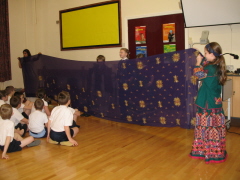 |
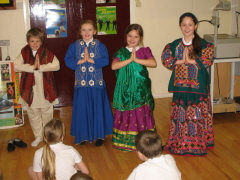 |
The Monkey Bridge to Lanka |
4C - Taken from the Forest |
 |
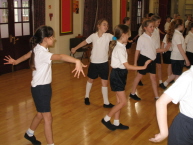 |
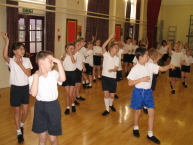 |
 |
Rama and Sita were good people. Although they had done nothing wrong, they had been banished to live in the forest for fourteen years, along with Rama's brother, Lakshman. While they were sad to have been sent away from their home, the three exiles made the most of their time in the forest and soon made friends with the birds and animals that lived there. One day, an evil demon-king named Ravana came to the forest and kidnapped Sita, stealing her away in his flying chariot. The animals heard Sita's cries and the monkeys tried to follow him, but the chariot was too fast. A great eagle tried to stop Ravana by swooping and attacking him with his sharp beak and talons. The demon-king slashed at the eagle with his sword and cut off his wings. Before he died, the eagle told Rama everything that had happened. Rama set off at once to rescue his beloved wife, accompanied by his brother Lakshman and a huge army of animals. |
|||
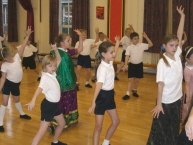 |
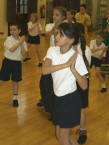 |
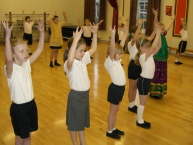 |
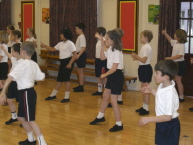 |
4H - The Rescue |
 |
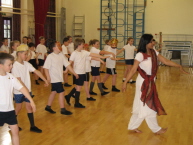 |
 |
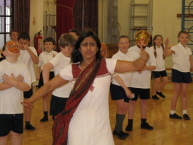 |
Having travelled many miles, Rama and his animal army reached the Indian Ocean. Ravana's island home of Lanka lay a short way across the water. Rama prayed to the god of the sea for help. The sea god told Rama to throw sticks and stones into the water and he would hold them up to make a floating bridge. The monkeys ran to and fro, collecting rocks to throw into the sea, while the bears brought huge boulders and the elephants uprooted trees. Even the tiny squirrels collected sand in their fur, anything to help Rama to build the bridge and save Sita. After many hours of hard work, the bridge was complete. Rama crossed over the bridge to Lanka to face the demon-king in battle. Ravana was surrounded by his evil demons, but Rama had his army of animals and the power of good on his side. After a fierce battle, Ravana was killed and his legions of demons were defeated. Good had triumphed over evil. |
|||
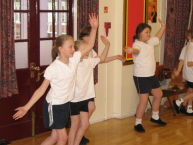 |
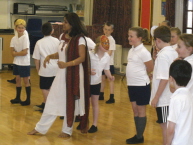 |
 |
 |
4J - Return to Ayodhya |
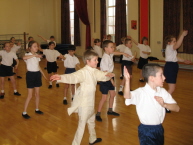 |
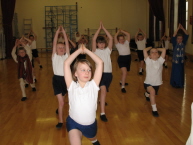 |
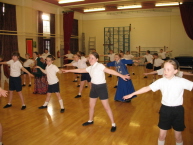 |
 |
Sita was safe at last. Rama was so happy to see his wife, and thanked his younger brother and the animals for helping him. Lakshman was crowned as the new king of Lanka. The people of the island celebrated because they knew Laksman was a good man and would rule with a fair hand. Taking Ravana's chariot, Rama and Sita flew back to their own kingdom of Ayodhya. The people of Ayodhya were overjoyed to see them return home safely. They decorated their homes and lit lamps in their honour. As his father had died during his years of exile, Rama was crowned as the new king with Sita as his queen. To this day, followers of the Hindu religion decorate their home each year during Diwali, the Festival of Lights, to celebrate the safe return of Rama and Sita . |
|||
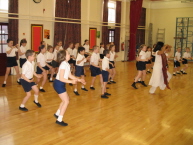 |
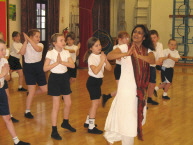 |
 |
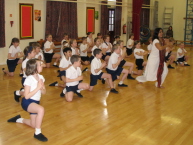 |
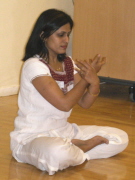 |
After the hard work and excercise came the time for a cool down. Purvi led the children in a meditation exercise that helped them to relax, become calmer and reflect on the fun they had had. |
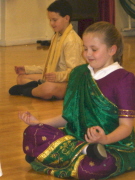 |